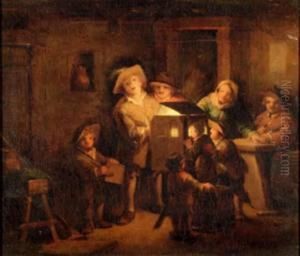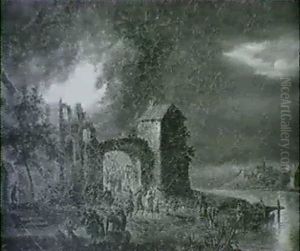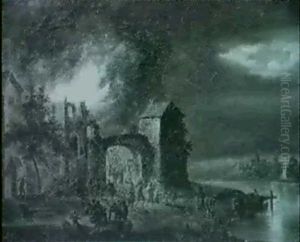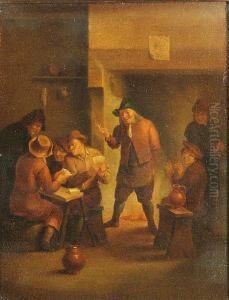Johann Peter Trautmann Paintings
Johann Peter Trautmann was a German painter and artist born in 1713 in Mainz, which was then part of the Holy Roman Empire. His exact date of birth is not well-documented, which is not uncommon for many artists of the period. Trautmann primarily worked during the Rococo period, which was characterized by ornate and asymmetrical designs, often with themes of fantasy and whimsy.
Trautmann received his artistic training in the workshop of the court painter of the Electorate of Mainz, Lothar Franz Retti. He quickly adapted to the Rococo style and became known for his versatility as an artist. Throughout his career, Trautmann worked on various forms of art including religious compositions, allegorical scenes, and portraits, showcasing his skill in both oil painting and fresco.
In the 1740s, Trautmann moved to Frankfurt am Main, where he became a member of the painters' guild and established himself as a respected artist. His work began to gain recognition and he received commissions from religious institutions and members of the aristocracy. One of his most notable works is the ceiling fresco in the refectory of the Benedictine abbey in Amorbach, Germany. This grand work exemplifies his ability to create dynamic compositions with a strong sense of light and movement, which was highly praised at the time.
Despite his successes, Trautmann's life was not without challenges. The latter part of his career was marked by financial difficulties, which were not uncommon for artists of his era. Nevertheless, he continued to work and produce art until his death in 1769 in Frankfurt am Main.
Today, Johann Peter Trautmann's work is considered an important part of German Rococo art, and his frescoes and paintings are featured in various churches and museums. His contributions to the art world are recognized for their technical skill, imaginative compositions, and the elegance characteristic of the Rococo era.



